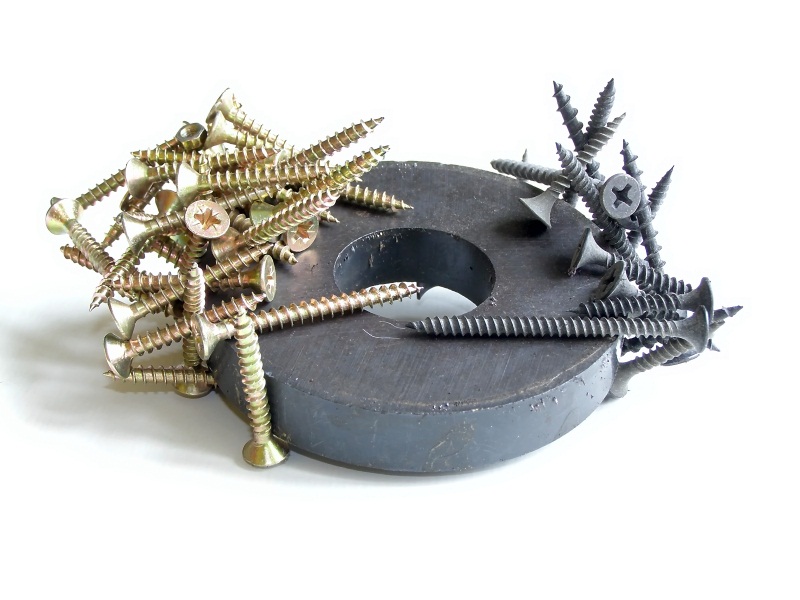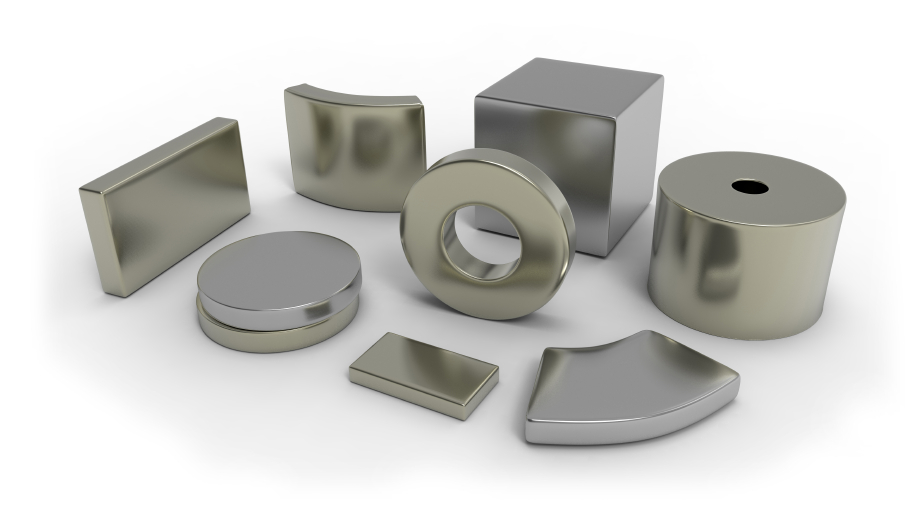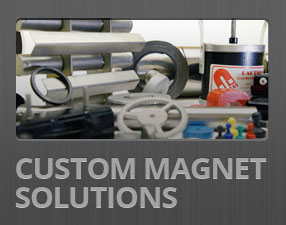How Magnets are Machined
The use of as-cast or near net shape magnets is almost always the preferred design path, but this is not always possible.
This is where machining becomes valuable.
Some of the machining techniques common in the metalworking arena are modified and adapted to create special design features or to achieve specified tolerances on magnets.
So if you are wondering - yes, we can machine some magnets - but there are important considerations associated with the process.
When machining works
 There are two basic scenarios that require magnet machining.
There are two basic scenarios that require magnet machining.
In some instances, a design engineer will request a magnet with machined features (e.g., special shapes, blind holes, counter-sinks, retaining shoulders, tapers). Magnet machining is also used to further tighten dimensional tolerances created during the casting or sintering process.
Regardless of the scenario, machining may be required, but the characteristically hard and brittle nature of most magnets makes the process difficult. It is possible to grind, drill, waterjet and EDM magnetic materials using specialized tools and machinery to fabricate distinct shapes, but you’ll need to partner with a magnet manufacturer with the requisite skill sets. What follows is a brief introduction to the specific challenges associated with machining common magnetic alloys.
Machining common magnetic materials
Alnico is a magnetic alloy cast of aluminum, nickel, cobalt, iron. The casting process normally yields a part close to the final size, with only the critical feature requirements receiving additional machining operations. Sintered alnico is less common but may allow the manufacturer to integrate more intricate features into the magnet without additional machining. Both cast and sintered alnico magnets are machined using abrasive grinding wheels, core drills, or EDM. Porosity is a common condition with cast alnico and it usually doesn’t affect the magnetic performance.
Neodymium Iron Boron is a rare earth magnetic alloy that is most commonly sintered into blocks or discs. Bonded neodymium iron boron magnets, which are produced by combining magnetic powder with a non-magnetic binder are easily machined but only produced in lower energy densities. Steps, chamfers, holes, and other custom features in neodymium magnets. Grinding neodymium magnets creates pyrophoric dust, so it is imperative to keep the magnets cool during machining. Additional consideration should also be given to the prevention of surface oxidation during and after the machining of neodymium magnets. It is always preferable to process neo magnets in the unmagnetized state.
Samarium Cobalt is another type of rare earth magnetic material, and like neodymium, this alloy is commonly sintered into blocks or discs. Similar features can be produced in samarium cobalt magnets, but due to its very brittle composition, special care needs to be given when machining and handling samarium cobalt magnets.
 Ceramic magnets are produced by calcination and then pressed and compacted into a die. The die pressed parts are then sintered to their final shapes. Ceramic magnets are incredibly hard and somewhat brittle. Diamond tooling and some abrasives are common means of fabrication with ceramic magnets. Regardless of the material type, most magnetic materials are machined or ground in the un-magnetized state with magnetization being completed post processing. Completing the fabrication steps in this order minimizes the potential harm done by the build-up of heat, which can adversely affect the magnetic properties of these alloys.
Ceramic magnets are produced by calcination and then pressed and compacted into a die. The die pressed parts are then sintered to their final shapes. Ceramic magnets are incredibly hard and somewhat brittle. Diamond tooling and some abrasives are common means of fabrication with ceramic magnets. Regardless of the material type, most magnetic materials are machined or ground in the un-magnetized state with magnetization being completed post processing. Completing the fabrication steps in this order minimizes the potential harm done by the build-up of heat, which can adversely affect the magnetic properties of these alloys.
Flexible magnetic materials are also workable. Die cutting and slitting is the most common, but some thicker profiles can also be machined similar to soft metals.















